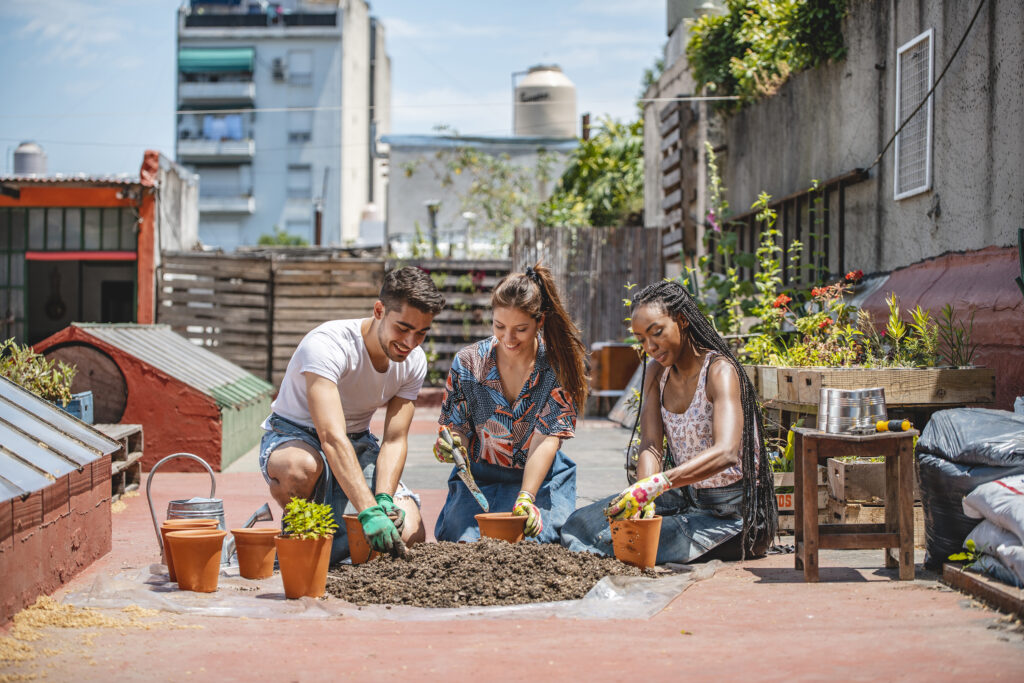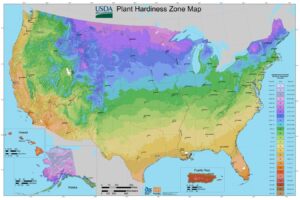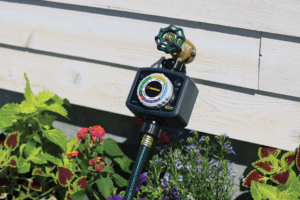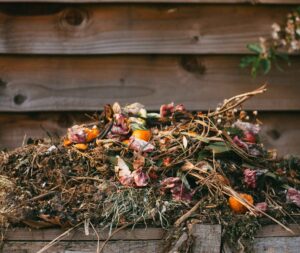Written by: Gail Fowler, an Extension Master Gardener with the Northern Shenandoah Valley Master Gardener Association, a unit of Virginia Cooperative Extension.

June 6, 2022
Don’t let space, time, or experience limit your dreams of growing fresh food. Planting herbs and vegetables in containers is a good way for both novice gardeners and pros to make the most of their patios, balconies, and even doorsteps. With the right conditions, you can create a variety of garden edibles in pots or planters, ranging in size from one quart to five gallons, depending on the crop. Here are five steps to get your started down the garden path.
Location, Location, Location
It’s true about real estate, and it’s true for successful gardening. Before you set down roots, get to know the neighborhood. Make sure the area you choose for your vegetable plants has enough daily, direct sunlight to support your crop. Carrots, lettuce and cilantro, for example, thrive in partial shade, but tomatoes, peppers, and basil need at least six hours (more is better) of direct sunlight to be productive. Read the seed packet label or the plant sticker to learn the specific requirements for the plants you choose.
Container Enthusiasm
There are many choices of gardening pots, both commercial and those created from re-purposed items. Clay, non-toxic wood, plastic, and metal are all good choices, as long as they are large enough to hold a fully-grown plant and have drainage plates or holes to keep the roots from sitting in water. Packaged potting mix, available at most garden centers, is suitable for growing vegetables in containers. It’s lightweight and porous enough to allow water and air to circulate properly. For added convenience, select a mix that also contains fertilizer, and your plants should have enough nutrients for eight to 10 weeks. Beyond that, you will want to add a water-soluble fertilizer every two or three weeks. Be sure to read and follow the product label instructions.
Read Before Planting
Fill your container with potting soil mix, leaving one- to two-inches of space at the top. Plant seeds or seedlings according to package or label instructions. These labels will provide you with the information you need about your plant. If you’re starting from seed, gently sprinkle the surface of the soil with water every day until the seeds sprout. Thin seedlings according to package directions. If using established plants, let the water run until it drains through the bottom of the pot.
Weather or Not
Even if it rains, container plants can dry out fast. Be sure to feel the soil every day to make sure it’s damp. If the soil is too hot and dry, plants will wilt. Soggy and wet? Roots will rot. Depending on the location of your containers and the local weather conditions, consider adding some mulch around the top of the container to help retain moisture in the soil, grouping plants to create some shade, or putting planted containers on wheels to make them easier to move during severe weather events like high winds, hail, and early frost.
Keep Up the Good Work
As your vegetables grow, you may need stakes or cages to help support them. Tomatoes, peppers, and eggplant are just a few vegetables that can sag or break under the weight of their fruit. Even container plants are subject to disease and pest damage. Check your plants for fungal and insect damage regularly, and consult your local, county extension service for help identifying the cause of the damage, as well as appropriate remedies. Remember that your plants can’t live without you, so be sure to have someone look after them if you’re away. Or, set up an automatic watering system.
Ready, set, garden! The harvest will be worth the effort.
For a more complete guide on container vegetable gardening, click here to download a free PDF from Virginia Cooperative Extension. https://www.pubs.ext.vt.edu/426/426-336/426-336.html





